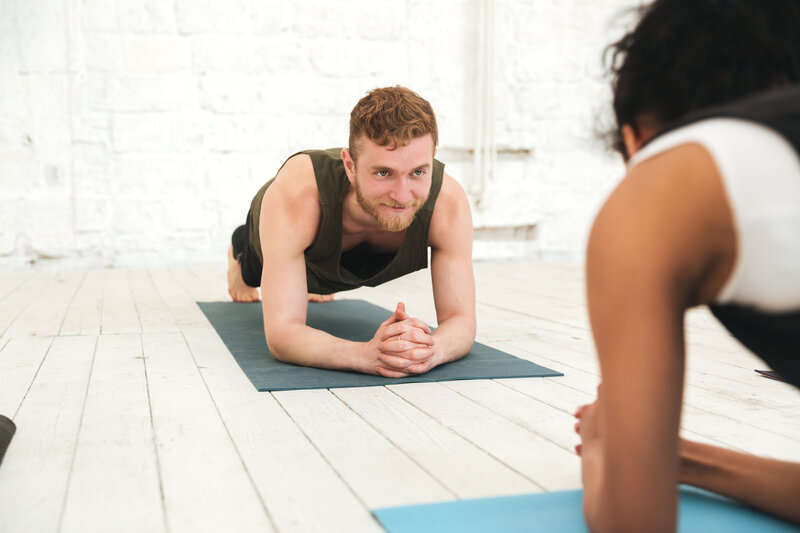Planks are one of our go-to core exercises for a few incredible reasons: between building core stability, increasing endurance, improving posture and helping carve out a six-pack, it seems there is nothing planks can’t do.
Planks are a classic exercise with a ton of variations that you’ll find everywhere from cardio bootcamp workouts and strength training routines to pilates, yoga and more. Ready to learn all about the ever-increasing benefits of planks? Keep reading!
And don’t forget to check out this article to learn how you can truly transform your core with planks.
5 Benefits of Doing Planks
When it comes to building core strength and stability, planks are an amazing and super simple exercise to include in all manner of workouts.
They can be done anywhere, anytime.
Whether you incorporate them at the end of your strength training routines or you find them in your yoga or pilates classes, planks are going to help you build strength throughout your core, leading to both muscle gains as well as the full body benefits listed below.
1. Planks Build Strength
One of the best reasons to start including plank variations into your workouts is because they build strength. A classic high or low plank is great for the entire core - meaning not only your abdominals but also your back, glutes, chest and shoulders as well.
This strength translates to more than just the look and shape of your muscles: it is everything that your muscles can do for you as well.
Strength in the core means you can jump higher and run faster, sure- but it also provides support for the rest of your body during everyday activities, as well.
2. Planks Improve Posture
That support we just talked about comes into play when it comes to your posture.
Strong abdominal muscles as well as a strong core overall are essential for promoting efficient spinal alignment and good posture.
Good posture comes with a slew of benefits on it’s own, from aiding in digestion to helping you breathe better, walk taller and with more confidence, as well as supporting the weight of your body.
3. Planks Provide Pain Relief
Walking, sitting and going about your daily life in alignment helps to alleviate unnecessary stress on your back, neck and even shoulders.
Planks can help provide pain relief as well as prevent pain or injury in these areas of the body since core strength takes the extra stress off of your muscles, joints and bones, while proper posture helps avoid straining these injury-prone areas.
4. Planks Promote Balance
And that’s not all your core is useful for! A strong core helps maintain and develop balance in the body.
Balance is important not just as we begin to age, but all throughout our lives as good balance means having full control over our movement.
It also plays a role in overall body awareness as well as coordination.
Planks help strengthen your core to promote good balance, making movement easier as well as helping to prevent injury.
5. Planks Improve Stability
Hand in hand with balance is another key that is essential to functional movement in the body: stability.
Stability takes the idea of balance to another level as it is not only about controlling movement of the body but also recruiting various muscle groups to work together to maintain this control, aiding in both stamina and the ability to generate power - be it in sports or simply in daily life.
Planks improve stability as this sort of training forces your muscles to work together as a unit to achieve a certain goal.
How to Do a Plank
Finally, planks are all about customization! Not ready for a traditional low plank just yet?
You can easily get started with planks from a high plank position, off of an incline or even from your knees to make them a little easier.
The idea is to gradually build up the time you can hold your plank in order to build strength and overall endurance.
But it doesn’t end there!
If you’re ready to seriously challenge yourself, there are a multitude of variations to make planks more difficult, from adding more time to your plank holds, trying an arm or a leg lift, transitioning from forearms to palms and back down again, bringing in your knees one at a time for a slow mountain climber effect, adding in a “plank jack” for some additional cardio work, and so much more.
Regardless of the plank variation you use, always remember proper form is essential!
Keep your lower back in alignment with the rest of your body and abs actively engaged and pulled towards your spine. It is better to come down from your plank for a quick rest than it is to hold a plank in an unsafe or ineffective position.
